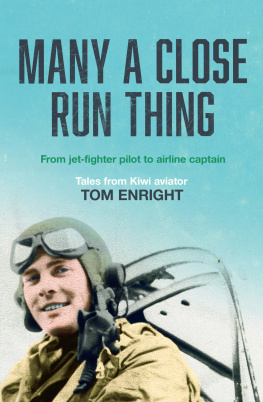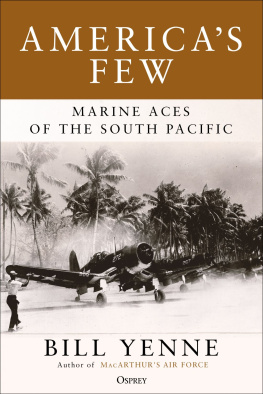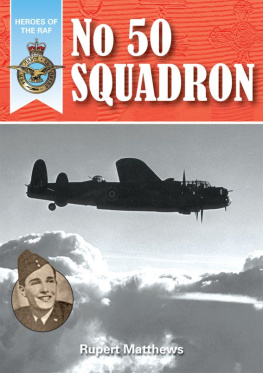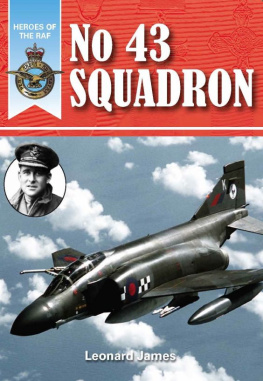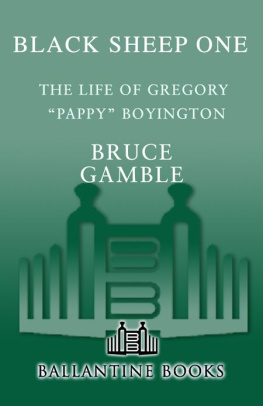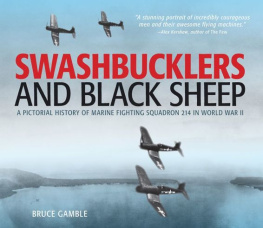Copyright 1986 by Frank E. Walton
The University Press of Kentucky
Scholarly publisher for the Commonwealth,
serving Bellarmine University, Berea College, Centre
College of Kentucky, Eastern Kentucky University,
The Filson Club Historical Society, Georgetown College,
Kentucky Historical Society, Kentucky State University,
Morehead State University, Murray State University,
Northern Kentucky University, Transylvania University,
University of Kentucky, University of Louisville,
and Western Kentucky University.
Editorial and Sales Offices: The University Press of Kentucky
663 South Limestone Street, Lexington, Kentucky 405084008
05 04 03 02 01 6 5 4 3 2
Library of Congress Cataloging-in-Publication Data
Walton, Frank E., 1909-
Once they were eagles.
Includes index.
1. World War, 19391945Aerial operations, American.
2. World War, 19391945CampaignsPacific Ocean.
3. World War, 19391945Regimental historiesUnited States. 4. United States. Marine Fighter Squadron 214History. I. Title.
D790.W32 1986 940.544973 85-29447
ISBN 0-8131-1579-5
ISBN 0-8131-0875-6 (pbk.)
This book is printed on acid-free recycled paper meeting
the requirements of the American National Standard
for Permanence in Paper for Printed Library Materials.
Manufactured in the United States of America.
Foreword
This is the exciting story of eighty-four days in the life of a famous Marine Corps fighting squadron during the battle with the Japanese for control of the South Pacific. It is an account of a group of fifty-one men commanded by a very unusual but talented combat ace, who in a very short time destroyed twenty-eight enemy planes and in turn was finally shot down himself to become a prisoner of war for twenty months and to win the Congressional Medal of Honor.
When Frank Walton called me from Honolulu to tell me about this book, I recalled my first conversation with him in Saigon about writing the story of Pappy Boyington and his Black Sheep. Knowing Colonel Waltons colorful background as deputy commander of the Los Angeles police force, his career as a foreign service officer in Southeast Asia, and his wartime adventures as a marine with Colonel Boyington and VMF 214, I told him that with this background and his skill as a writer he should surely produce a book. This story is the result.
Greatly interested, I asked Colonel Walton to send me a copy. A few days later a package of manuscript arrived. I opened it expecting to find another well-written story of marines in combatthis time in the air. What I did find was an intensely interesting and superbly written narrative, which I could not let go until I had finished.
The book is unique in that it not only vividly describes the life-and-death battles fought by the young marine pilots of the Black Sheep Squadron in the skies over the South Pacific, but follows up this story in the second portion of the account with personal interviews, extending over a two-year-period, with squadron survivors giving their recollections of the Great War and telling what has happened to each of them since.
Walton was air combat intelligence officer for his squadron and bases his story on his personal war diaries of the time, which he illuminates with a vivid memory and a great writing talent. It is a moving account of war and tells of mens loyalties to one another in the great tradition of the U.S. Marine Corps.
WALLACE M. GREENE, JR.
General, U.S. Marine Corps (Retired)
23rd Commandant
Preface
In 1976, a television show appeared entitled Baa, Baa Black Sheep, allegedly based on the World War II exploits of the famed VMF 214the Black Sheep Squadron of Marine fighter pilots. It was a hoked-up, phony, typical Hollywood-type production depicting the Black Sheep as a bunch of brawling bums who were fugitives from courts-martial. Even the squadron commander, ace flyer Gregory Pappy Boyington himself, who was billed as technical adviser for the series, claimed that hed recruited the squadron pilots by giving them the choice of standing trial for various unspecified misdeeds or joining him in the Black Sheep Squadron.
Not only was nothing further from the facts (no Black Sheep pilot had ever been charged with a court-martial offense), but such false allegations had a detrimental effect on the professional careers of a number of the former Black Sheep. These lawyers, college professors, businessmen, government officials, artists, and engineers did not appreciate the label of bums and misfits. Nor, certainly, did the widows, mothers, fathers, and children of those Black Sheep who had given their lives in the service of their country.
As intelligence officer of the original Black Sheep Squadron, I knew how false the picture was. I had retired in Hawaiiafter 27 years of service with the Marine Corps, the Los Angeles Police Department, and the State Departments foreign servicewhen I was approached by some former Black Sheep to try to arrange a reunion.
After all those years, locating men from 23 states was a formidable job, but the search was a labor of love. I started with the 33-year-old addresses listed in my War Diaries. Leads from these gave me more addresses.
I found that some had not lived to return to the States. Bill Crocker had been lost on a mission out of Green Island on 25 March 1944. Bill Hobbs had been lost over New Ireland on 30 March 1944.
Paul Mullen had returned to the States and then gone out to Japan, where hed been lost in a midair collision in Kikuma on 12 February 1946. Stan Bailey had gone on to command the new VMF 214 on a carrier assignment; hed then returned to Hawaii, where hed been lost on a night flying mission on 5 April 1948.
Bob Bragdon and John Brown had died of natural causes after the war.
Including the 11 wed lost during our two combat tours, a total of 17 had gone to the Valhalla for fighter pilots, leaving 34 survivors from the original 51 Black Sheep. It took two years, several hundred letters and long distance telephone calls, and the resources of Marine Corps headquarters, hometown newspapers, local police, and in some cases the FBI to locate them all. Would they be interested in coming to Hawaii for a reunion? Many of them were and 17 did, 15 with their wives.
It was an exhilarating experience for all of us. We held a luau; we dredged the words of old songs from our collective memories; we met with the young pilots from the squadron stationed at the Kaneohe Marine Corps Air Station and marveled at the fact that even the


